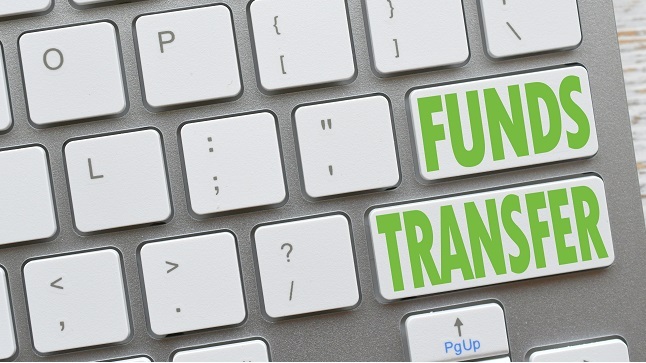
 Data Structure
Data Structure Networking
Networking RDBMS
RDBMS Operating System
Operating System Java
Java MS Excel
MS Excel iOS
iOS HTML
HTML CSS
CSS Android
Android Python
Python C Programming
C Programming C++
C++ C#
C# MongoDB
MongoDB MySQL
MySQL Javascript
Javascript PHP
PHP
- Selected Reading
- UPSC IAS Exams Notes
- Developer's Best Practices
- Questions and Answers
- Effective Resume Writing
- HR Interview Questions
- Computer Glossary
- Who is Who
What is the full form of EFT?
Definition of EFT
Electronic fund transfer (EFT) payment methods can be used by partners to divide a restaurant tab and by businesses to collect payments from clients.

Money can be sent between organizations and individuals through an electronic funds transfer. To speed up and secure transactions, electronic funds transfers are often chosen as a substitute for paper-based payment methods like cheques and cash. These days, the likelihood is that you use an EFT to complete your transaction.
EFT payments have a wide range of applications and are crucial to the flow of money in both your life and the economy. EFT payments' fundamental workings begin with a sender and a recipient. By selecting a payment method, a payment amount, and the recipient's payment information, senders set up the transaction. The money will go from the person who sent them to the person receiving them once the sender has approved the transaction.
Even though EFT payments work the same way across all platforms in their fundamentals, there may be some differences along the route. For instance, when you use your debit card to pay at a dining place, the establishment receives an EFT from you. However, an EFT payment is also started when your company deposits your paycheck.
Types of EFT
Although there is an electronic transfer of funds involved in every EFT payment, there are various different types to take into account. According to the Electronic Fund Transfer Act, which was passed in 1978, the categories of payments include some form of customer security
Direct transfer With a direct deposit, a paper paycheck is no longer necessary. Instead, your bank account is credited with the amount from your paycheck
ATM operations Using an ATM to deposit money or withdraw money is an example of an EFT transaction.
Payments over the phone If you provide vendor access to your bank account details over the phone, they may start an EFT transaction from that account.
Digital checks Paper checks are replaced by this EFT payment option. Normally, you'll authorize a vendor to utilize the details of your checking account to generate an electronic check and send it for payment.
Card-Payment Transactions You can use EFT payments to pay down the remaining debt on your credit card. EFT can be used to transfer credit card balances from one card to another.
Process of EFT
An EFT transfer is typically quite easy to complete. The two parties involved are the sender of the money and the recipient of the payments. When a sender requests a transfer, the request moves from the bank that sent it to the receiver's bank over several digital networks, which may be connected to the internet or originate from a payment terminal. Senders might be a person paying an individual for a service, a company, or both. Similar to this, consumers might be businesses such as employees, suppliers of goods, retailers, and service providers. Most payments are completed or cleared within a few weeks.
Advantages of EFT
EFT offers a lot of benefits when it comes to payments. Both parties to the transaction have to do very little work, and all EFT methods are reliable and speedy. EFT is therefore a wise financial decision for businesses. The personnel can concentrate on more important tasks because minor issues are taken care of by digital technology, which needs no effort and takes very little time.

When using paper checks, check printing and shipping are required, both of which are added expenses. These jobs require interpersonal connection, which results in less work being completed or the need for more personnel. The possibility of mail loss or even check interception is a risk associated with mailing checks. In either of these scenarios, stop payment is an expense that is required. With an EFT, all of this is erased.
A face-to-face transaction is necessary when paying with cash. There is a chance that the money will be counted incorrectly, there is a chance that the bills will be fake, and managing the cash transaction to filling the safe to in-person deposit at the bank will cost more money and take more time. Again, using an EFT option like a credit card eliminates all of these hazards.
One of the main advantages of EFT is its well-known safety. In addition to saving money, the secure business identifies organizations as reliable, leading to repeat business and long-term connections.
Conclusion
EFTs, also known as direct deposits or electronic funds transfers, are digital transfers of money from one bank account to another. These transfers are carried out without the assistance of bank employees. Since it is a digital transaction, no paper records are needed. EFT has replaced other money transfer options as the most popular option because of its simplicity, accessibility, and directness. As businesses utilize EFT extensively because it is less expensive, quicker, and overall needs less labor, paper checks are becoming less and less popular.
FAQs
Q1. How much time does it take to sign up for EFT?
Ans: Simply follow their contractor's instructions to finish the EFT enrollment procedure for providers. In a matter of weeks, Medicare payments will be sent electronically directly to the financial institution.
Q2. What does an eft authorization form include?
Ans: Easier bank statement and payment reconciliation. A copy of the EFT permission form can be requested by providers after they have enrolled in Medicare and all.
Q3. How safe is the transfer of money electronically?
Ans: Even while electronic fund transfers are generally seen as being considerably safer than conventional paper checks for sending payments, sticking with reputable firms is still the best way to guarantee that your money will arrive at its destination without incident.

